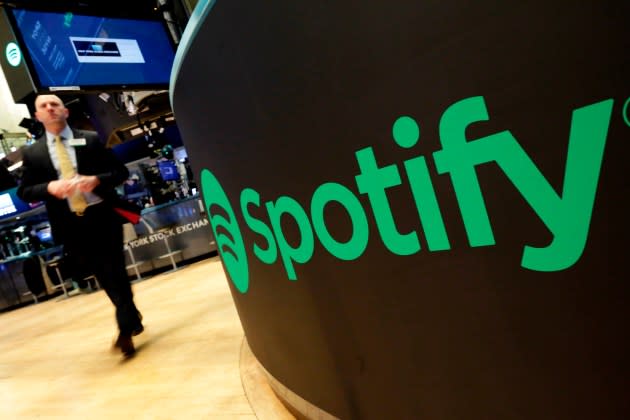Spotify’s Loss Could Be Fashion’s Gain

Tech-forward fashion businesses have a history of scooping up algorithm wranglers from places like Netflix and Pandora — but in the AI era, people who understand how preferences and recommendations work could be more valuable to brands than ever.
This context may put a new lens on Spotify’s latest layoffs, announced Monday. According to a blog post published on its site, the company plans to drop as much as 17 percent of its staff. The workforce reduction follows two much smaller waves this year, with a few hundred pounding the pavement in January, followed by a June round that shaved staff by 6 percent.
More from WWD
This time, Spotify is making deeper cuts, letting loose some 1,500 people out of 8,800. “Economic growth has slowed dramatically and capital has become more expensive. Spotify is not an exception to these realities,” explained Daniel Ek, founder and chief executive officer. The scenario is now prompting the company to “ensure we are right-sized for the challenges ahead.”
It’s never good news to see anyone lose their jobs, and these pink slips join myriad others across tech, including large employers like Amazon, Google, Meta, X (Twitter) and others, which have collectively eliminated hundreds of thousands of roles.
In Spotify’s case, it didn’t specify exactly which positions will be eliminated. But the wide berth of its latest layoffs appear likely to touch numerous teams — which matters, if it suddenly sets off a swathe of data science candidates hunting for a new opportunity.
For years, e-commerce outfits that touted their artificial intelligence chops singled out the value of streaming media’s engineers and data scientists, because they implicitly understand how to leverage taste and preference data. These pros have inspired fashion start-ups like The Yes, prompting then-CEO Julie Bornstein to set the scene for WWD in a previous conversation.
“I remember talking to one of the early data scientists at Pandora, and him describing that they started with 25 musicians who understood the elements of music, could identify them and sort of create their initial taxonomy — or data that’s assigned to each song,” she told WWD in 2020. “They could then understand what relationships were between songs and when you like a song, then we start to understand what you like about other music. That’s exactly what we’re doing in fashion.”
The Yes created a fashion taxonomy, and the work was enough to attract a Pinterest acquisition last year. This work seems particularly prescient now, given the AI boom. Meanwhile, numerous companies such as Stitch Fix and others have been hiring data scientists from streaming media companies to build their recommendations engines.
The online styling platform vowed to double down on technology like AI and machine learning, following a string of struggling quarters that saw the departure of CEO Elizabeth Spaulding. Under former Macy’s executive Matt Baer, who assumed the role in June, Stitch Fix hired a new chief product and technology officer in Tony Bacos, formerly of Amazon. The company appears to be shifting gears. It had been focusing on its direct-buy business, Freestyle, but renews its commitment to its core business. It has been cutting other costs, with its own layoffs, warehouse downsizing and shuttering of its U.K. business. But the personalized shopping platform has been expanding its digital capabilities.
The fruits of that labor may not be evident in its first-quarter earnings on Tuesday, but it appears that AI plays a key role in any potential comeback.
Of course, the economic factors that pressurized the tech sector continue on, and they are many of the same challenges facing retail — such as expectations of consumer-spending headwinds in 2024. So the thought of hiring, even for AI, is not for the faint of heart.
But some brands will undoubtedly proceed to invest in data science talent regardless, in order to bring in expertise that can leverage the growing array of models and tools. For them, the tech layoffs may equate to an opportunity. Those who can’t muster those resources, however, risk getting left behind in the AI era.
Best of WWD